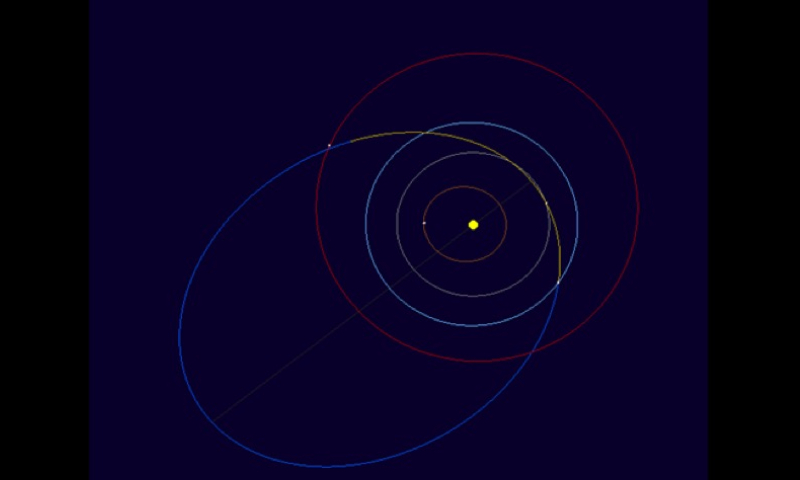Humanity's 11th successful asteroid impact early warning; China contributes multi-site network observations

Track simulation diagram of near-Earth asteroid 2023 VB2 Photo: Website of Xinjiang Astronomical Observatory
Humanity issued its 11th asteroid impact warning on December 3, marking the fourth successful warning in 2024, according to the Purple Mountain Observatory (PMO) of the Chinese Academy of Sciences, CCTV reported on Friday.
China is in a key geographical location for monitoring in this event, with ephemeris data showing that follow-up observations could be conducted after nightfall in China. The PMO coordinated observations using several telescopes, capturing images 42 minutes before the impact. The Xinjiang Astronomical Observatory (XAO) also contributed to the observations, according to CCTV.
According to global observation data gathered by the International Astronomical Union Minor Planet Center (MPC), during the asteroid's approach, the PMO predicted that it would enter the atmosphere at 16:15 UTC on Tuesday, at the location of 60.80 degrees north latitude, 118.98 degrees east longitude. The calculation results were consistent with the announcement from the IAUMPC.
This asteroid, with an estimated diameter of 0.75 to 1 meter, was first discovered by the University of Arizona's the 90" (2.3 m) Bok Telescope at 05:55:16 UTC on December 3. The object was submitted to the MPC NEO Confirmation Page (NEOCP) under the temporary designation C0WEPC5, CCTV reported.
Subsequently, multiple observatories in the US and Hawaii conducted follow-up observations. Based on 16 observation data points collected over approximately three hours, the European Space Agency (ESA) issued an impact prediction. The asteroid was expected to enter the atmosphere at 16:15 ± 5 UTC on December 3, 2024 (00:15 ± 5 Beijing time, December 4) over Siberia. Video footage from Russia confirmed that a bright fireball appeared on schedule at 16:14:53 UTC.
Two hours after the impact, the IAUMPC had received 64 observation data points from around the world and officially designated the asteroid as 2024 XA1. The expected impact location was updated to 60.5 degrees north latitude, 119.0 degrees east longitude. This marks the 11th successful early warning of an asteroid impact by humanity.
The increasing number of successful asteroid impact warnings is attributed to the continuous improvement of global near-Earth asteroid monitoring and early warning capabilities.
The PMO has long been dedicated to the research and operational enhancement of near-Earth asteroid monitoring and early warning methods. It is also actively promoting the construction of the next-generation near-Earth object (NEO) Surveyor monitoring and early warning network, which includes threat warnings, monitoring of the entry process, and analysis of fallen debris, thus systematically improving China's capabilities in near-Earth asteroid monitoring and early warning, CCTV said.
Global Times



